Outofambit - Out Of Ambit





More Posts from Outofambit and Others

Star Forming Region S106
Massive star IRS 4 is beginning to spread its wings. Born only about 100,000 years ago, material streaming out from this newborn star has formed the nebula dubbed Sharpless 2-106 Nebula (S106), pictured above. A large disk of dust and gas orbiting Infrared Source 4 (IRS 4), visible in dark red near the image center, gives the nebula an hourglass or butterfly shape. S106 gas near IRS 4 acts as an emission nebula as it emits light after being ionized, while dust far from IRS 4 reflects light from the central star and so acts as a reflection nebula. Detailed inspection of images like the above image has revealed hundreds of low-mass brown dwarf stars lurking in the nebula’s gas. S106 spans about 2 light-years and lies about 2000 light-years away toward the constellation of the Swan (Cygnus).
rebloging from my main blog.
This is the first place I ever found Young Wizards fandom
And I don’t want to lose you, cousins, so I’ve made us a Lifeboat, if you will.
https://discord.gg/83Fz8KM
I’ve never heard of us having a discord server, but if an established one already exists, please someone link me.
ORBITAL MECHANICS
Complexity Graphics by Tatiana Plakhova
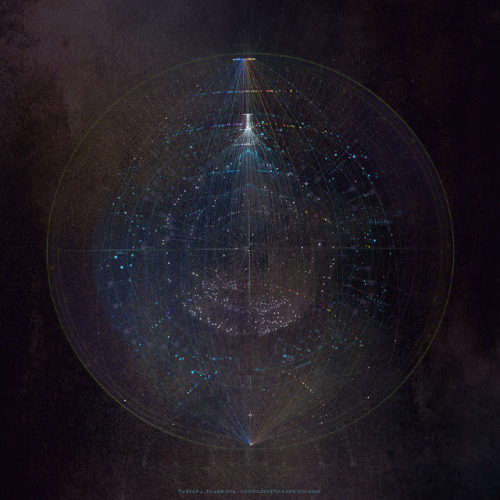
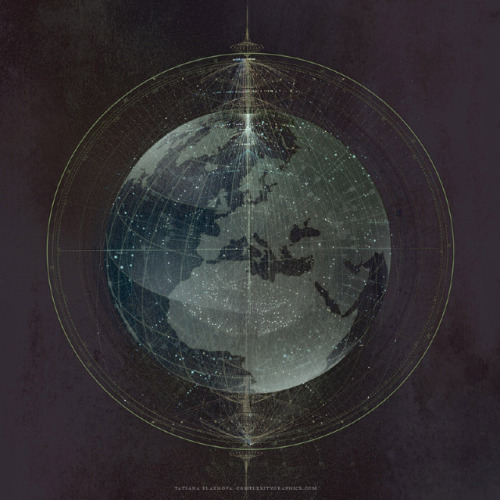
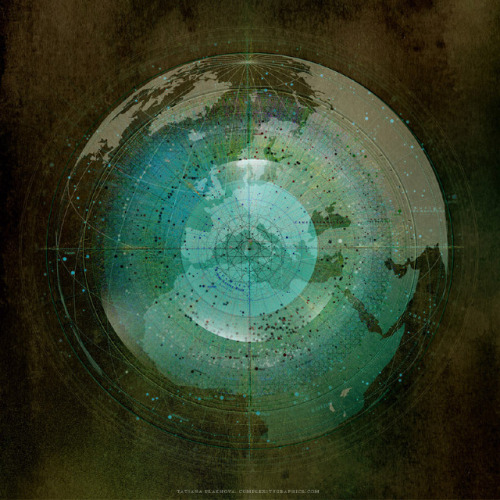
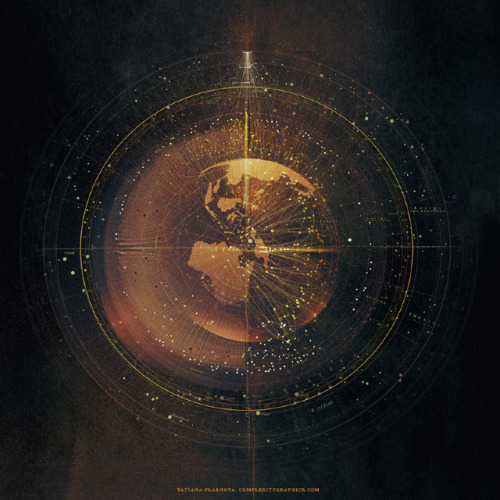
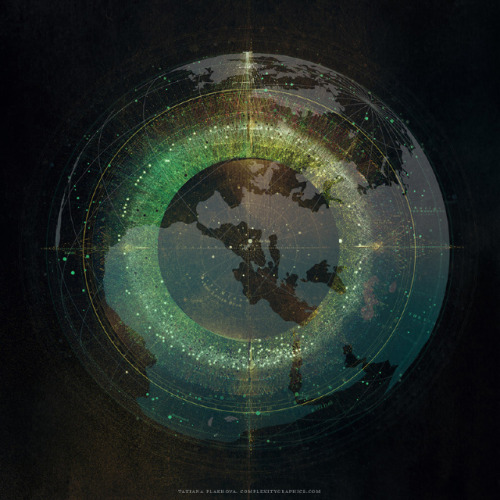
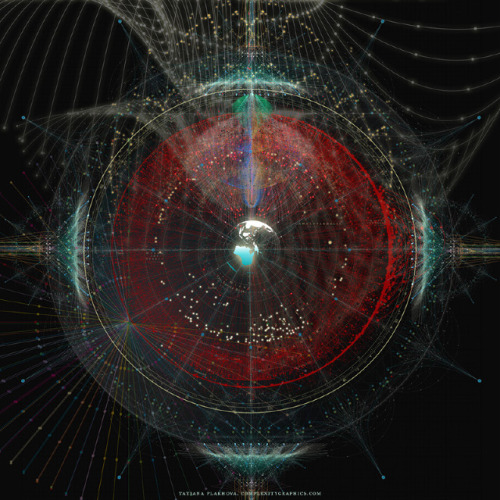
Top Ten Female Characters from Books or Television
2) Nita Callahan
Favorite quote: “Wow, who sold you that one? I think I’ll go ennoble a couple waffles.” (And basically all of books 6 and 9 where she saves the day)
Nita is my favorite book heroine ever. From the very beginning, I related to her completely for her love of reading and learning, and for being made fun of for it. She is one of the most relatable characters I’ve ever come across. She’s young, but seems so much older- whether because of the wizardry and the responsibility that comes along with it, or because everyone always feels like they’re more mature than the world thinks they are. She shows us that you don’t have to be a respected adult to change (or to save) the world. She’s insecure, selfish, moody (like when she snaps at Kit for no reason), but she also can admit when she’s messed up and learns from her mistakes. She considers giving up wizardry and her best friend to save her mother. She almost goes through with sacrificing herself to save the world (even though she wasn’t too happy about it when she first found out that’s what she got herself into) when she was what, 12/13? She’s quick in a crisis, and very smart. In A Wizard Alone, she taught me so much about grieving, and I wished those books had been there for me when my own mom passed away (though I was probably a bit too young then). Not to mention that in A Wizard Alone she singlehandedly saves the day, using what the Lone Power tried to use to bring her down to bring It down, and save Darryl and Kit. She also nearly singlehandedly saves the day in A Wizard of Mars, not letting her jealousy or anger get in the way of what needed to be done, while also being rather bad ass about it. Nita taught me that it’s okay to be angry- you can use it to your advantage. She helped to teach me that what people think of you doesn’t matter. The people who made fun of/beat up Nita didn’t know that she helped save their lives more than once, and she never let them color her view of humanity. She never once doubted that their lives weren’t worth saving, despite how they treated her. She showed me that being a good sister doesn’t mean you can’t fight and tease each other sometimes. She went from being very dependent on Kit- always giving her power to him, helping him rather than the other way around- to being a very good, independent wizard who stands on her own and stands tall.

Gorgeous ‘Pillars Of Creation’ Shine In New Hi-Def Hubble Photo

"The Seychelles has become a major tourist destination for beachgoing and scuba diving, but it’s not only humans that are beginning to flock to this island.
In what marine biologists have described as a “phenomenal finding,” a survey of whales around the territorial waters of this archipelagic nation revealed the presence of blue whales—over a dozen.
It’s the first time they’ve been seen in these warm seas since 1966, and it’s a wonderful milestone in a long and increasingly successful recovery for the world’s largest animal.
The Seychelles are located in the Indian Ocean off the east coast of Africa, and they were historically a stopover point for Soviet whalers en route to Antarctica. The years 1963 to 1966 were particularly difficult for whales here, and many were taken before the International Convention on the Regulation of Whaling put an end to the practice of hunting baleen whales in 1973.
Since 1966, no dedicated investigation of whales in the Seychelles had been made until 2020, when a partnership of four universities conducted an acoustic survey over the period of two years.
They made five different sightings of groups of up to 10 animals.
“This was a phenomenal finding,” Jeremy Kiszka, a co-author of the paper from Florida International University, wrote in The Conversation. “We were prepared to not see any blue whales due to the high level of hunting that occurred fairly recently and absolutely no information was available since the last blue whale was killed in the region in 1964.” ...
The team behind the survey sent images taken of the whales’ dorsal sides to a database to see if any of them had been recorded before, and amid the reel, not a single one was a match with any other photographed whale.
This, the team suggests, means they have probably never been seen before, which for a species that big might seem strange, but along with there being only 5,000 to 15,000 on Earth, they migrate vast distances while diving deep, making recording their movements incredibly challenging.
The survey identified 23 whale species in total using hydroponic mics over 2 years with peak activity coming between December and April. This is a fascinating finding that suggests something about the seas around the Seychelles makes for excellent whale habitat."
-via Good News Network, April 30, 2024
goodnight moon. goodnight Milky Way. goodnight Ursa Major (UMa I dSph). goodnight 24IC 1613 (UGC 662.350[8].

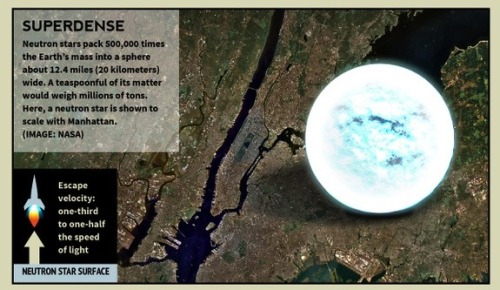
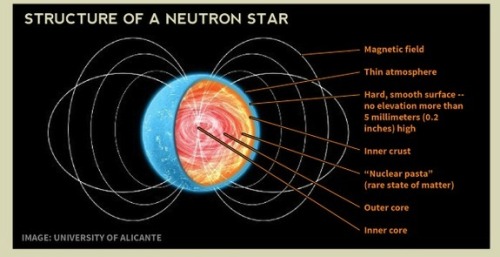
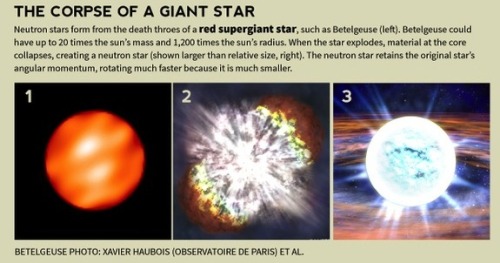
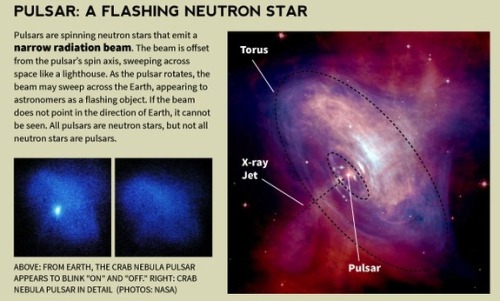

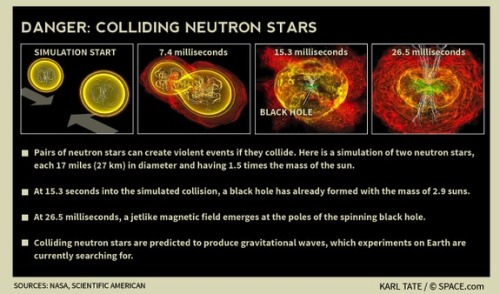
Inside a Neutron Star
Credit: Karl Tate, via SPACE.com


Kepler Mission Analysis Shows Reduced Number of Earth-Sized Planets in Field of View
A large number of worlds found by NASA’s Kepler alien planet-hunting space telescope are probably significantly larger than scientists previously estimated, a new study suggests. Using a galaxy similar to our own Milky Way, the image above shows the scale of the distances for the sample of stars with planet candidates described in a new study by scientists using the Kitt Peak National Observatory Mayall 4-meter telescope . The circled dot represents the position of the sun in the Milky Way, and the stippled cone shows how far away the new candidate stars are (2800-7000 light years), compared to the size of our galaxy.
The Kepler Space Telescope has spotted more than 2,700 potential exoplanets since its launch in 2009, and scientists using the Kitt Peak National Observatory categorized the home stars of many of those planet candidates for the past three years. In particular, the researchers made detailed follow-up observations of 300 of the stars Kepler found likely to be harboring exoplanets.
The Kepler satellite, in orbit around the sun, stares at a region of the northern hemisphere sky sandwiched between the bright stars Vega and Deneb. Attached to the telescope is the largest imaging camera ever flown into space—16 million pixels—the only instrument on the telescope and the one used to monitor all the stars in its search for planets. Planets are detected if they pass in front of their parent sun, causing a very slight dip in the star’s brightness. When this dip repeats periodically, it reveals the presence of a possible planet, the length of the planet’s “year”, and other information.
One of the main findings of this initial work is that our observations indicate that most of the stars we observed are slightly larger than previously thought and one quarter of them are at least 35 percent larger,” astronomer and leader of the study Mark Everett said in a statement. “Therefore, any planets orbiting these stars must be larger and hotter as well. By implication, these new results reduce the number of candidate Earth-size planet analogues detected by Kepler.”
Read
I just realized that the first antagonist Kit and Nita faced together was a helicopter parent.
-
 that-dope-shit-that-i-like liked this · 9 months ago
that-dope-shit-that-i-like liked this · 9 months ago -
 fealiniel reblogged this · 11 months ago
fealiniel reblogged this · 11 months ago -
 justremainingmyself reblogged this · 11 months ago
justremainingmyself reblogged this · 11 months ago -
 justremainingmyself liked this · 11 months ago
justremainingmyself liked this · 11 months ago -
 yuri-on-ice-ice-baby liked this · 1 year ago
yuri-on-ice-ice-baby liked this · 1 year ago -
 darth-salem-emperor-of-earth reblogged this · 1 year ago
darth-salem-emperor-of-earth reblogged this · 1 year ago -
 what-a-total-dweeb liked this · 1 year ago
what-a-total-dweeb liked this · 1 year ago -
 darth-salem-emperor-of-earth liked this · 1 year ago
darth-salem-emperor-of-earth liked this · 1 year ago -
 crazy-grrrl-on-the-computer reblogged this · 1 year ago
crazy-grrrl-on-the-computer reblogged this · 1 year ago -
 chickadee-chariot liked this · 1 year ago
chickadee-chariot liked this · 1 year ago -
 championbuttmaster liked this · 1 year ago
championbuttmaster liked this · 1 year ago -
 justplainhanan reblogged this · 1 year ago
justplainhanan reblogged this · 1 year ago -
 sebhar liked this · 1 year ago
sebhar liked this · 1 year ago -
 celestialcow reblogged this · 1 year ago
celestialcow reblogged this · 1 year ago -
 sinful-joker liked this · 2 years ago
sinful-joker liked this · 2 years ago -
 alittleveggies liked this · 2 years ago
alittleveggies liked this · 2 years ago -
 thevictimofsilence reblogged this · 2 years ago
thevictimofsilence reblogged this · 2 years ago -
 thevictimofsilence liked this · 2 years ago
thevictimofsilence liked this · 2 years ago -
 takato1993 reblogged this · 2 years ago
takato1993 reblogged this · 2 years ago -
 wisp-of-the-willow reblogged this · 2 years ago
wisp-of-the-willow reblogged this · 2 years ago -
 leiffer67 liked this · 2 years ago
leiffer67 liked this · 2 years ago -
 lars-world reblogged this · 2 years ago
lars-world reblogged this · 2 years ago -
 fern-29 liked this · 2 years ago
fern-29 liked this · 2 years ago -
 selfish-giant liked this · 3 years ago
selfish-giant liked this · 3 years ago -
 lzloki reblogged this · 3 years ago
lzloki reblogged this · 3 years ago -
 brownie0227 liked this · 3 years ago
brownie0227 liked this · 3 years ago -
 silentxcircus liked this · 3 years ago
silentxcircus liked this · 3 years ago -
 symphonyoflunacy liked this · 3 years ago
symphonyoflunacy liked this · 3 years ago -
 seisunbox reblogged this · 3 years ago
seisunbox reblogged this · 3 years ago -
 timetrqveler liked this · 3 years ago
timetrqveler liked this · 3 years ago -
 duck-tan reblogged this · 3 years ago
duck-tan reblogged this · 3 years ago -
 duck-tan liked this · 3 years ago
duck-tan liked this · 3 years ago -
 sugarhoneyice-t liked this · 4 years ago
sugarhoneyice-t liked this · 4 years ago -
 uniethenlfer liked this · 4 years ago
uniethenlfer liked this · 4 years ago -
 rimedio8 liked this · 4 years ago
rimedio8 liked this · 4 years ago -
 starryeyedbisexual reblogged this · 4 years ago
starryeyedbisexual reblogged this · 4 years ago -
 mlmcaptainpike liked this · 4 years ago
mlmcaptainpike liked this · 4 years ago
A personal temporospatial claudication for Young Wizards fandom-related posts and general space nonsense.
288 posts